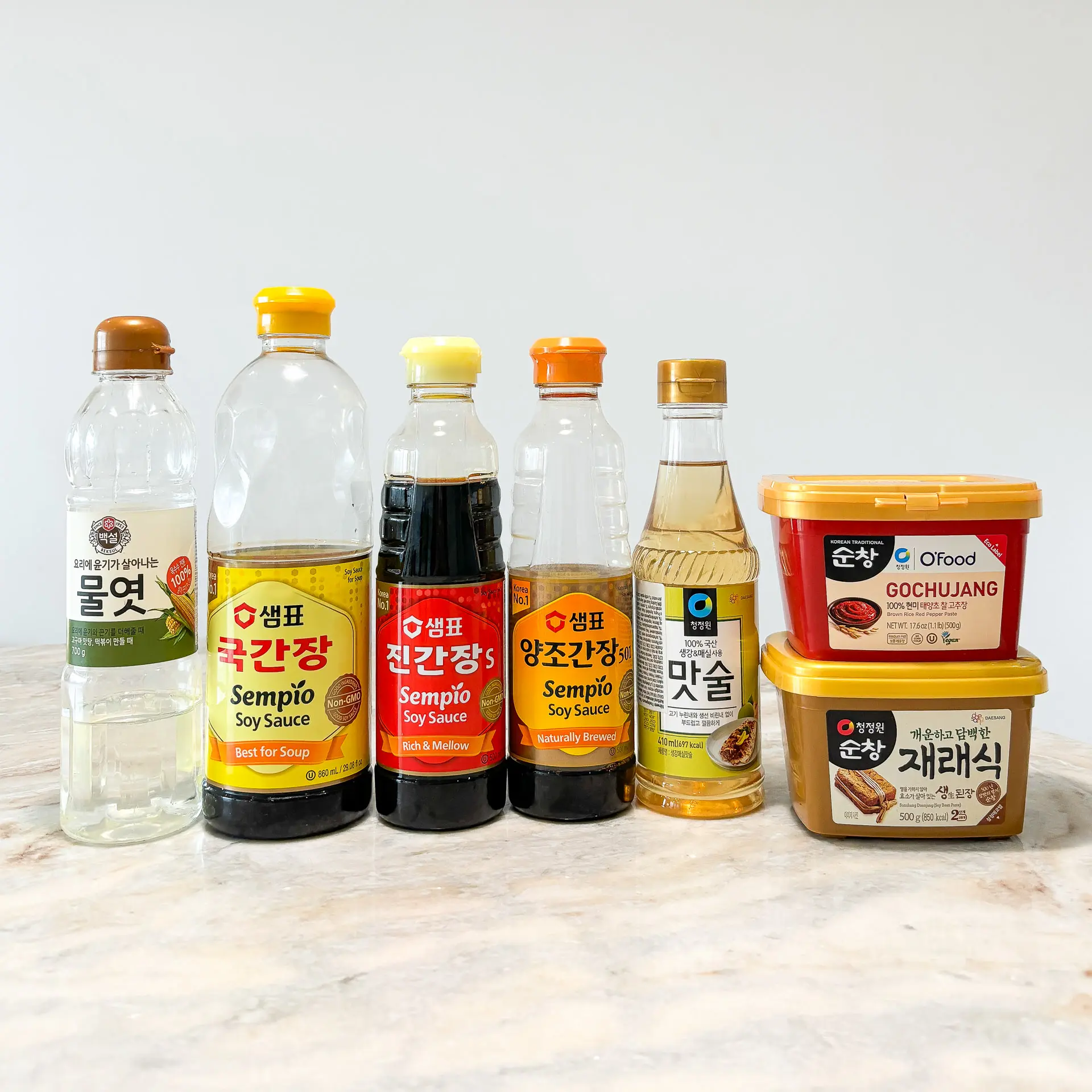Essential Korean Ingredients
What are traditional Korean ingredients for cooking?If you’re new to Korean food and cooking, many Korean ingredients may feel unfamiliar. Plus, with so many options, it can be hard to decide what to buy! Today, I’m sharing 10 essential Korean cooking ingredients that you should always have in your kitchen – so you can make any Korean dish with ease!
What are The 3 Basic Korean Seasonings?
Let’s look at the most important ingredients first. The 3 basic Korean seasonings are soy sauce(ganjang), gochujang and doenjang.
Soy Sauce (Ganjang) 간장
The most important ingredient is soy sauce! Soy sauce(Ganjang) 간장 is an essential Korean sauce in any Korean kitchen. It is made by fermenting soybeans in salted water. Soy sauce adds saltiness and flavor to dishes.Korean soy sauce available in stores can be broadly categorized into three types: Yangjo Ganjang (Brewed Soy Sauce), Jin Ganjang (Dark Soy Sauce), and Guk Ganjang (Soup Soy Sauce).
- Yangjo Ganjang (Brewed Soy Sauce) 양조간장
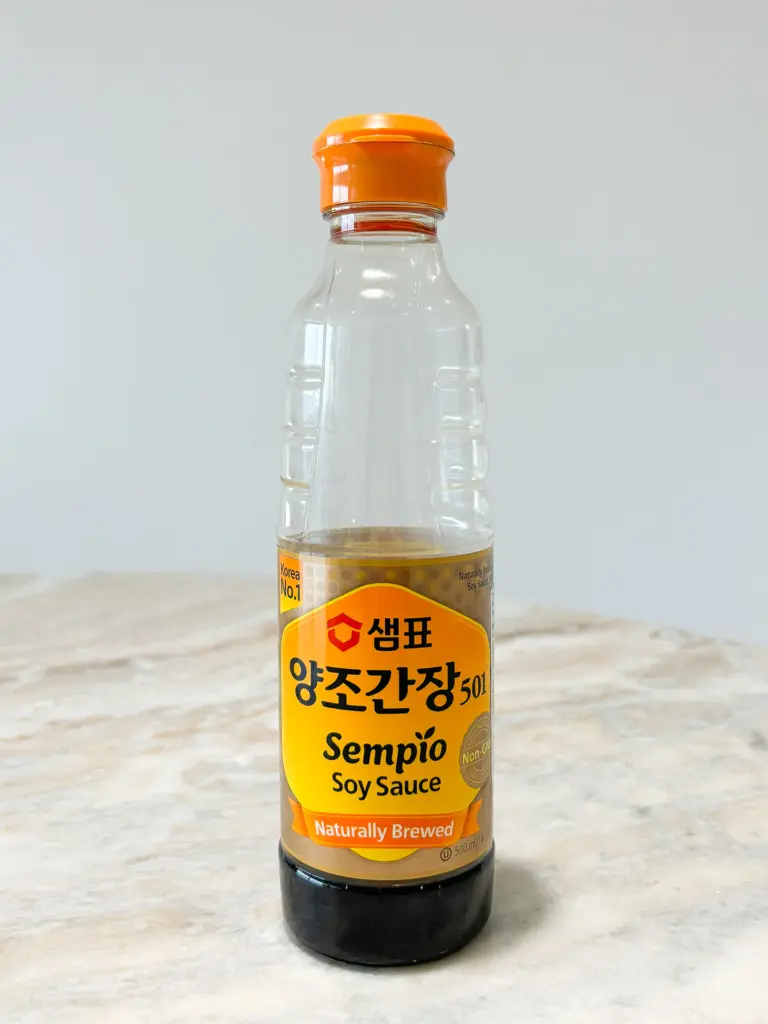
This type of soy sauce has a rich flavor and aroma, making it slightly sweeter and darker than other soy sauces. However, because its flavor and aroma dissipate when heated, it is best used for raw sauces, dressings, and seasonings for side dishes that do not require cooking.
Shop in the US: https://amzn.to/4jDT9Jv
Shop in EU: https://amzn.to/4jGygxB
- Jin Ganjang (Dark Soy Sauce) 진간장
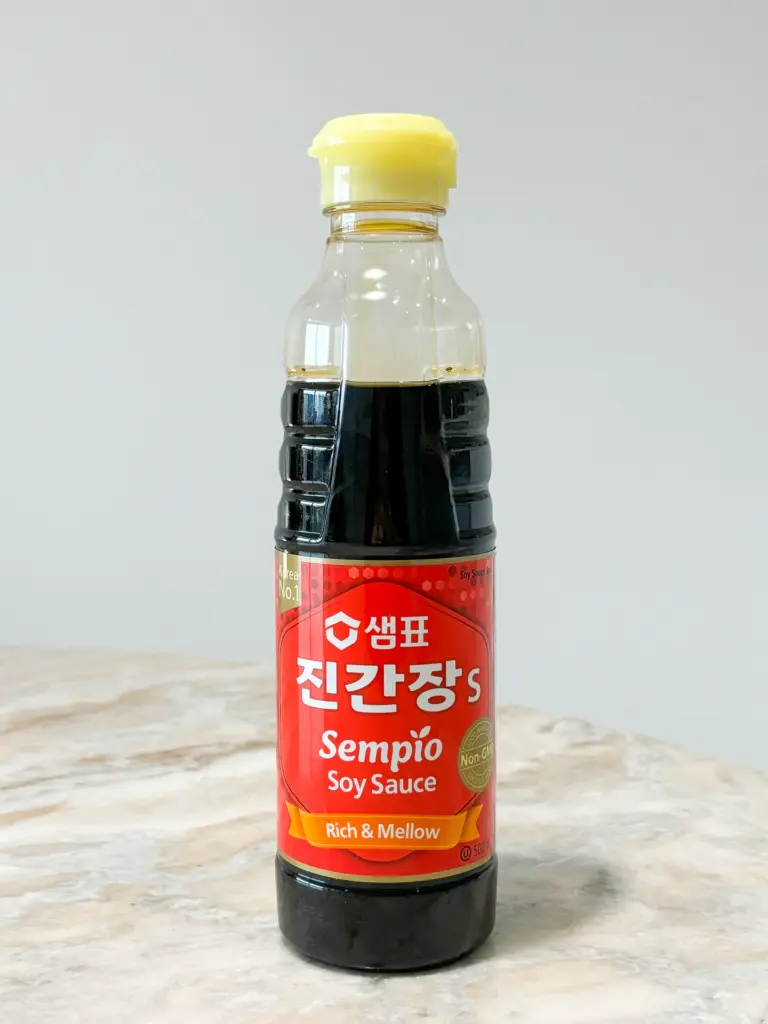
Traditionally, Jin Ganjang refers to soy sauce that has been aged for more than 5 years, but commercially available versions are blended soy sauces made to save time and money. This type of soy sauce retains its flavor even after prolonged cooking, making it suitable for simmering, braising, or stir-frying. The sweetness intensifies with heat, so it works well for stews, braises, and stir-fries.
Shop in the US: https://amzn.to/4ghq3wJ
Shop in EU: https://amzn.to/3Ek7ESL
- Guk Ganjang (Soup Soy Sauce) 국간장
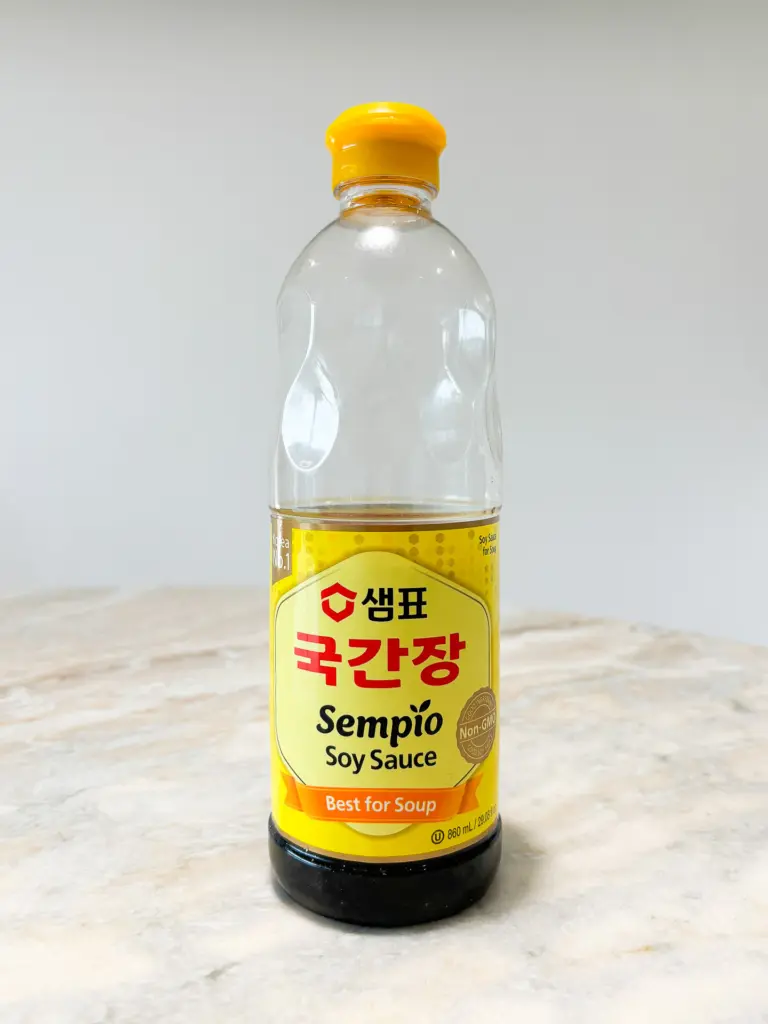
Also known as ‘Joseon Ganjang 조선간장’ (traditional Korean soy sauce), this variety is extremely salty but has a lighter color compared to other soy sauces. Because of its light color, it does not darken soup or broth significantly. It has a very high sodium content, so only a small amount is needed to season soups. Since its flavor remains stable even when cooked, it is mainly used in soups and broths.
Shop in the US: https://amzn.to/40uN7SU
Shop in EU: https://amzn.to/3Q30hS5
Eomuk Tang (Korean Hot pot with Fish Cake)Below is an eomuk tang (fish cake soup) 어묵탕 made with guk ganjang (Korean soup soy sauce) as the base. It’s a warm and umami-rich broth where you can really enjoy the taste of guk ganjang.
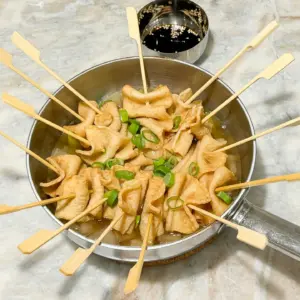
Gochujang (Korean Red Pepper Paste) 고추장
Gochujang(고추장) is one of the most popular sauces in the world, so you may have heard of it. It is a traditional Korean sauce(seasoning) made by fermenting red pepper powder with glutinous rice, fermented soybean powder (meju), salt water, and other ingredients.
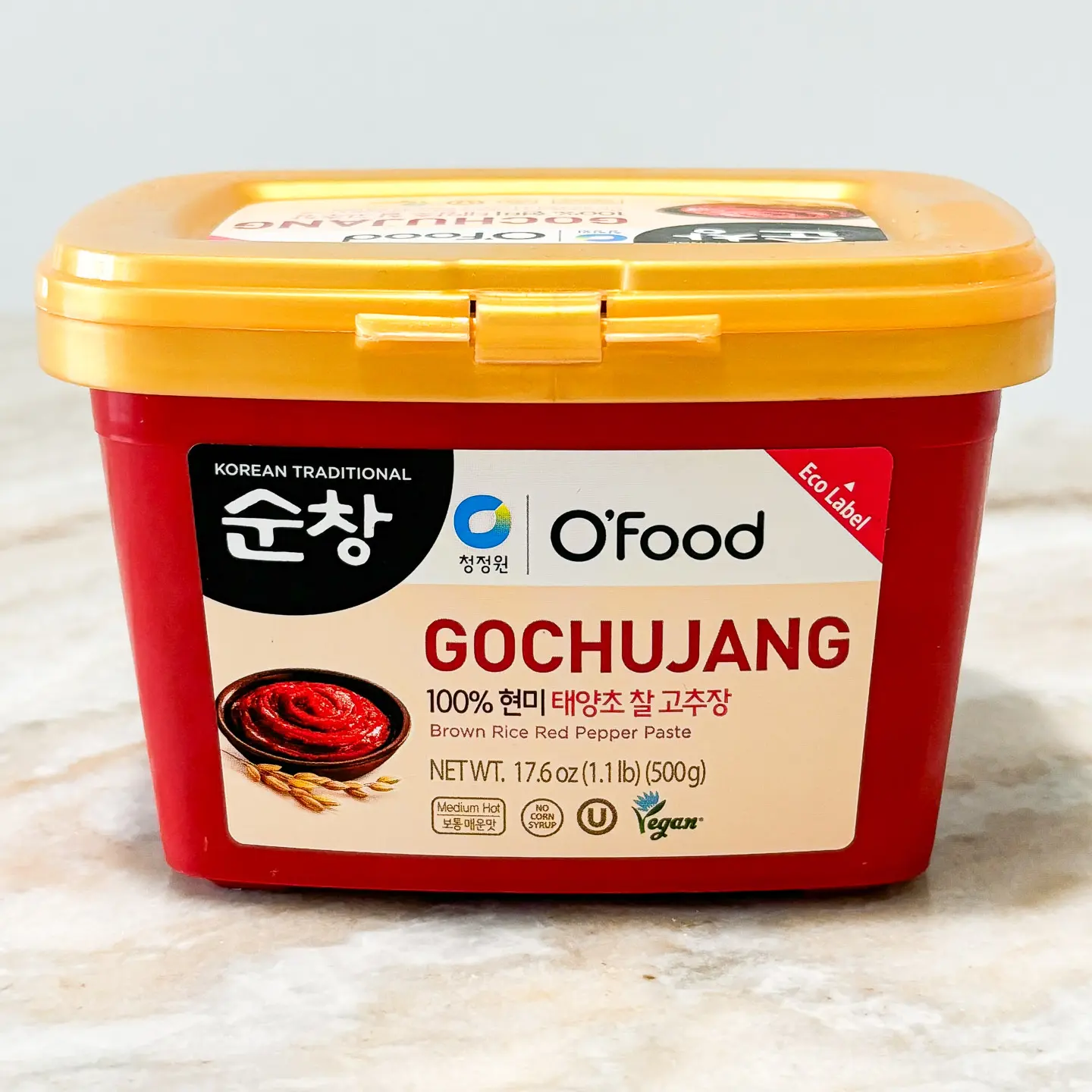
Because gochujang contains malt, honey, and other sweeteners, it has a unique balance of saltiness, spiciness, and sweetness. In terms of spiciness, gochujang is less hot than Tabasco, but hotter than sweet chili sauce.
Gochujang can be used as a dipping sauce for vegetables or meat, as a condiment for bibimbap, or as the main flavoring ingredient in various dishes. Some of the most popular dishes made with gochujang are tteokbokki (spicy rice cakes), dakgalbi (spicy stir-fry chicken), and jeyuk bokkeum (spicy stir-fry pork).
Shop in the US: https://amzn.to/42FcGDD
Shop in EU: https://amzn.to/4aAWEwp
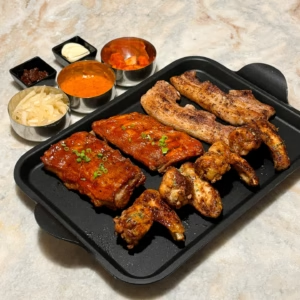
This recipe is for Korean BBQ Gochujang Pork Ribs, made with gochujang as the barbecue sauce. The spicy, sweet, and slightly exotic flavors make it incredibly delicious, and it’s perfect to serve as a special dish when guests come over.
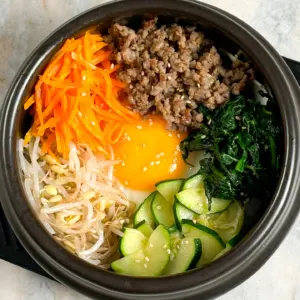
This is the restaurant quality bibimbap recipe that you can have in a fancy Korean restaurant in Korea. It’s the best bibimbap I’ve ever had in my life.
Doenjang (Korean Fermented Soybean Paste) 된장
Doenjang is one of the 3 essential Korean pastes(Korean sauces), along with soy sauce and gochujang. It is made by fermenting soybean blocks (meju) with salt water. During this process, the extracted liquid becomes soy sauce, while the remaining solid portion becomes doenjang.
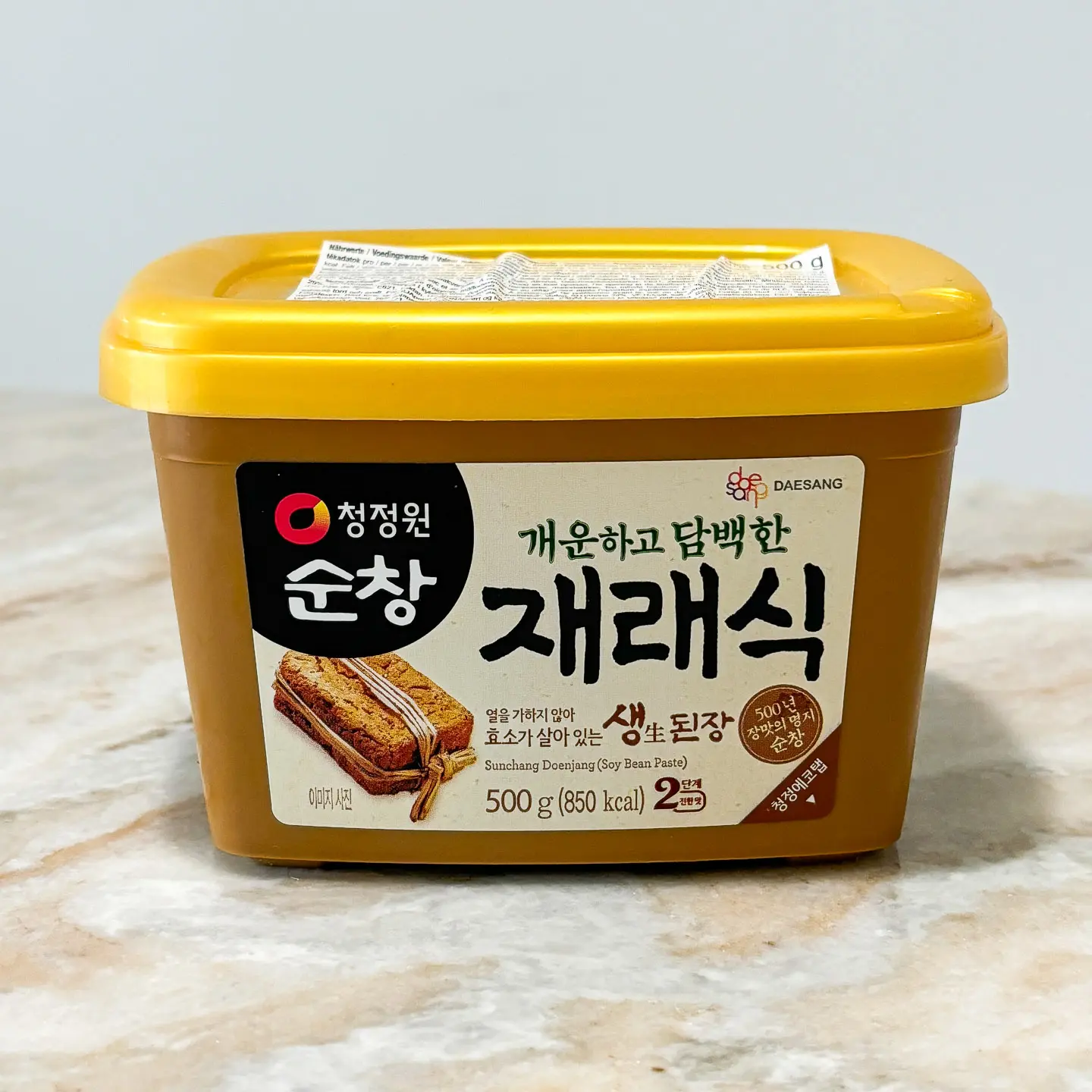
Like gochujang, doenjang can be used as a dipping sauce for vegetables or meat. A popular Korean BBQ dipping sauce, ssamjang, is made by mixing doenjang with gochujang, so you can easily make it yourself without having to buy it separately.
Doenjang is widely used in Korean cuisine, especially in soups and stews such as doenjang jjigae (soybean paste stew) and doenjang guk (soybean paste soup). It is also used as a condiment for vegetable side dishes (namul) and can be added in small amounts to dishes like bossam (boiled pork wraps) to help eliminate unwanted meaty odors.
Shop in the US: https://amzn.to/40SeYxA
Shop in EU: https://amzn.to/3CE4p83
Doenjang is a Korean fermented ingredient that gives a flavor similar to pecorino cheese when used in pasta. Below is a doenjang cream pasta, made by adding cream to doenjang, topped with Korean BBQ pork belly (samgyeopsal). It’s a fusion of Korean and Italian cuisine with a rich depth of flavor, and I highly recommend it.
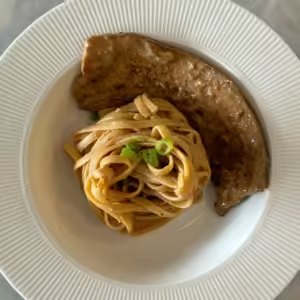
Gochugaru (Korean Red Pepper Powder) 고춧가루
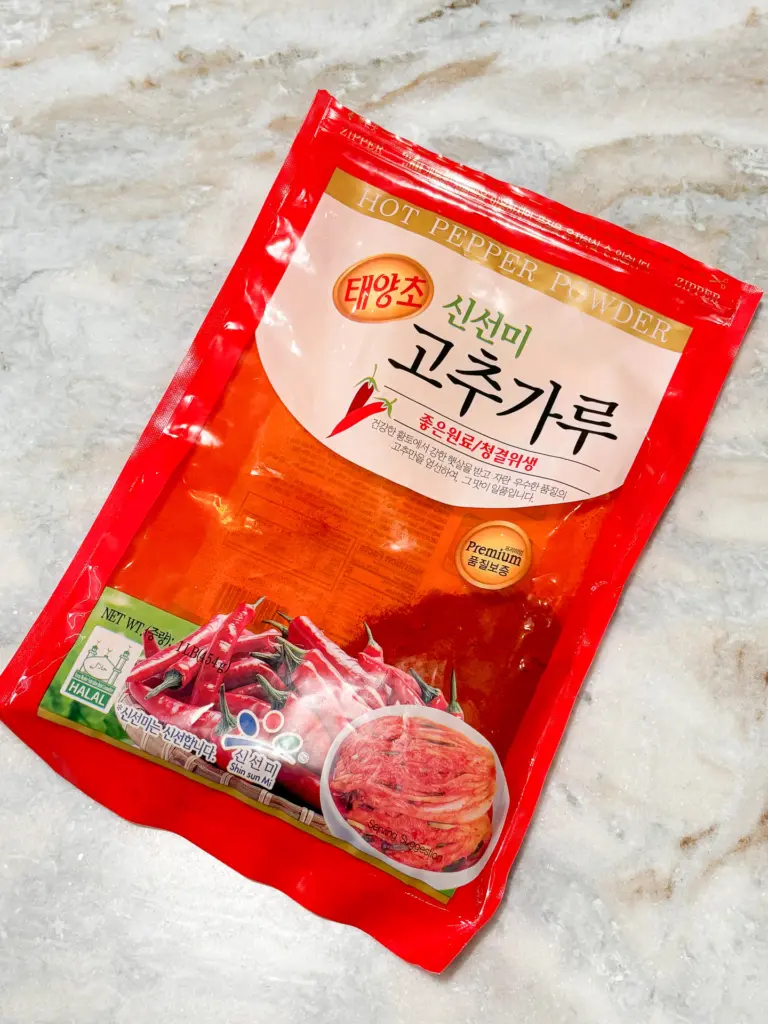
Gochugaru is an essential ingredient in Korean cooking. It is made by drying and grinding red chili peppers. As seen in kimchi and gochujang, Koreans use gochugaru extensively in their cooking. It is commonly added to soups, stews, and side dishes to give them a spicy kick.
Shop in the US: https://amzn.to/4hD0Duw
Shop in EU: https://amzn.to/40F34pK
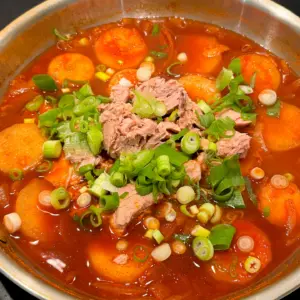
There are two main types of gochugaru: coarse gochugaru and fine gochugaru. Coarse gochugaru is used in dishes where the red pepper flakes need to be visible, such as kimchi. Fine gochugaru is used in gochujang and dishes where color enhancement is needed. It also brings out a deeper chili flavor. For this reason, many people mix both coarse and fine gochugaru when cooking to balance texture and flavor.
Sesame Oil (Chamgireum) 참기름
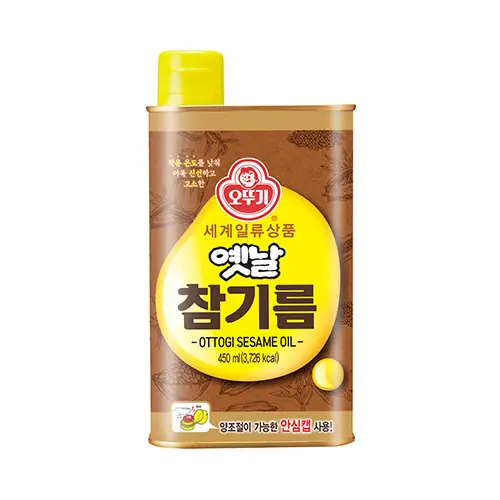
Sesame oil is made by pressing sesame seeds. Korean sesame oil tends to be more expensive than sesame oil from other countries. This is because it is produced using the hot-pressing method, in which the sesame seeds are roasted at temperatures above 210°C before being pressed. This process enhances the unique nutty flavor and deep color of Korean sesame oil.
Compared to other oils, sesame oil has a strong roasted sesame aroma. Because of its intense flavor, it is typically used in small amounts as a finishing touch or seasoning in various dishes.
Shop in the US: https://amzn.to/3CjmGYr
Shop in EU: https://amzn.to/40StJ3v
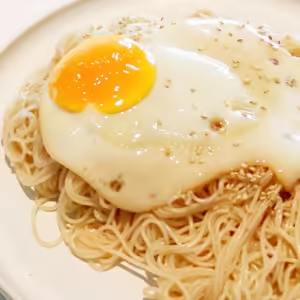
This recipe is for Ganjang Bibim Guksu, a simple yet flavorful soy sauce-based noodle dish with a rich, nutty flavor from sesame oil. It’s one of the most basic and popular noodle dishes in Korea, even enjoyed by children – definitely worth a try!
Green Onion (Pa) 파
In Korean cuisine, green onion(scallion, spring onion) is used in almost every dish. It’s hard to find a recipe without it! It adds a sharp, aromatic flavor to food.
In Korea, green onions are commonly used in soups and stews to enhance the flavor and umami of the broth. They are also added to side dishes as a garnish to enhance both color and flavor.
In addition to being a supporting ingredient, green onions can be the main ingredient in dishes like pa-kimchi 파김치 (green onion kimchi) and pa-chae 파채 (shredded green onion salad), which are eaten as side dishes.
Below is a Korean Fried Chicken Jeon, a recipe that allows you to easily make Korean-style chicken at home. A generous amount of thinly sliced green onions is added to balance the richness. It’s crispy and the sweet and savory seasoning makes it absolutely delicious.
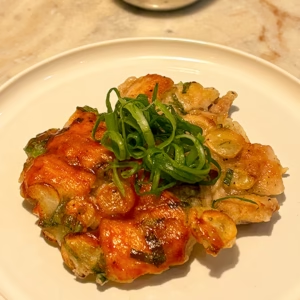
Garlic (Maneul) 마늘
Garlic is an essential part of Korean ingredients. Koreans are a nation of garlic lovers – aside from rice, garlic is in almost every dish. If a Western mother’s hands smell of butter, a Korean mother’s hands are often associated with the aroma of garlic.
In Korea, garlic is eaten raw with samgyeopsal (grilled pork belly) or grilled in pork fat during Korean BBQ. When roasted, its spiciness fades and it develops a sweet, rich flavor. Minced garlic is essential for seasoning side dishes, soups and stews, adding depth and pungency. It’s also used to remove unwanted odors from meat and fish. Koreans love garlic so much that there’s even a garlic pickle (maneul jangajji) made entirely of garlic.
Many Koreans dislike overly greasy or oily foods, and garlic plays a key role in cutting through richness and balancing flavors.
Aekjeot (Korean Fish Sauce)
This is also a very important Korean sauce. Korean fish sauce, or aekjeot(액젓), is a fermented condiment made by salting and fermenting fish. It is widely used in Korean cooking, including braised dishes, soups, and seasoned vegetables, adding umami and depth of flavor. A spoonful of fish sauce in jjigae(찌개) truly brings out the authentic taste of Korea.
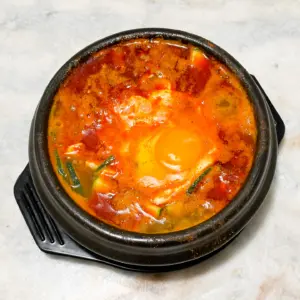
The two most common types of Korean fish sauce are myulchi aekjeot 멸치액젓 (anchovy fish sauce) and kanari aekjeot 까나리액젓 (sand lance fish sauce).
Myulchi aekjeot(멸치액젓) has a stronger, saltier taste with a more pronounced fermented aroma. However, it provides a deeper umami, so only a small amount is needed to enhance the flavor. It is a key ingredient in kimchi brine and is also used in stews and stir-fries.
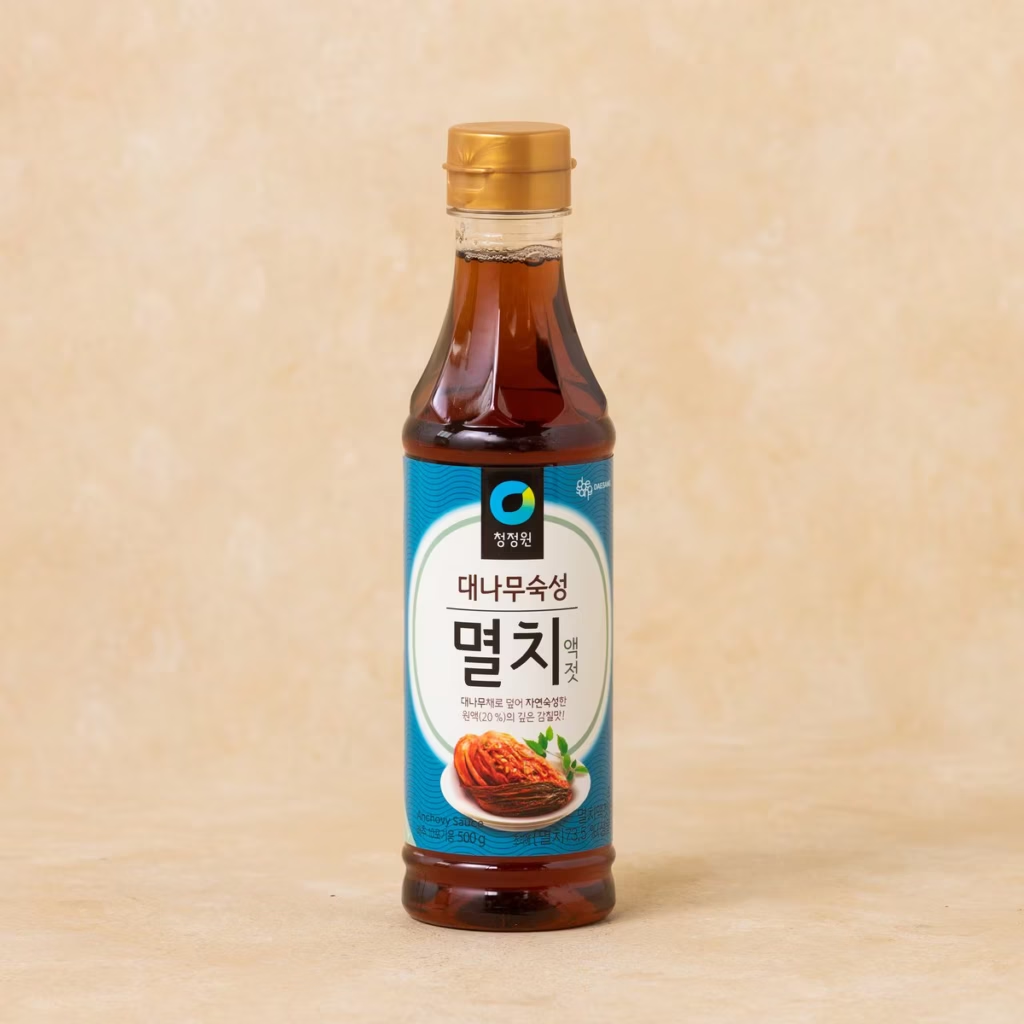
Shop in the US: https://amzn.to/4aCP2cO
Kanari aekjeot(까나리액젓) is milder, less salty, and sweeter than myulchi aekjeot. While it can be used in soups, it is especially favored in seasoned vegetable dishes (namul) to enhance umami without overpowering the dish. It is ideal for recipes that require a lighter umami flavor compared to myulchi aekjeot.
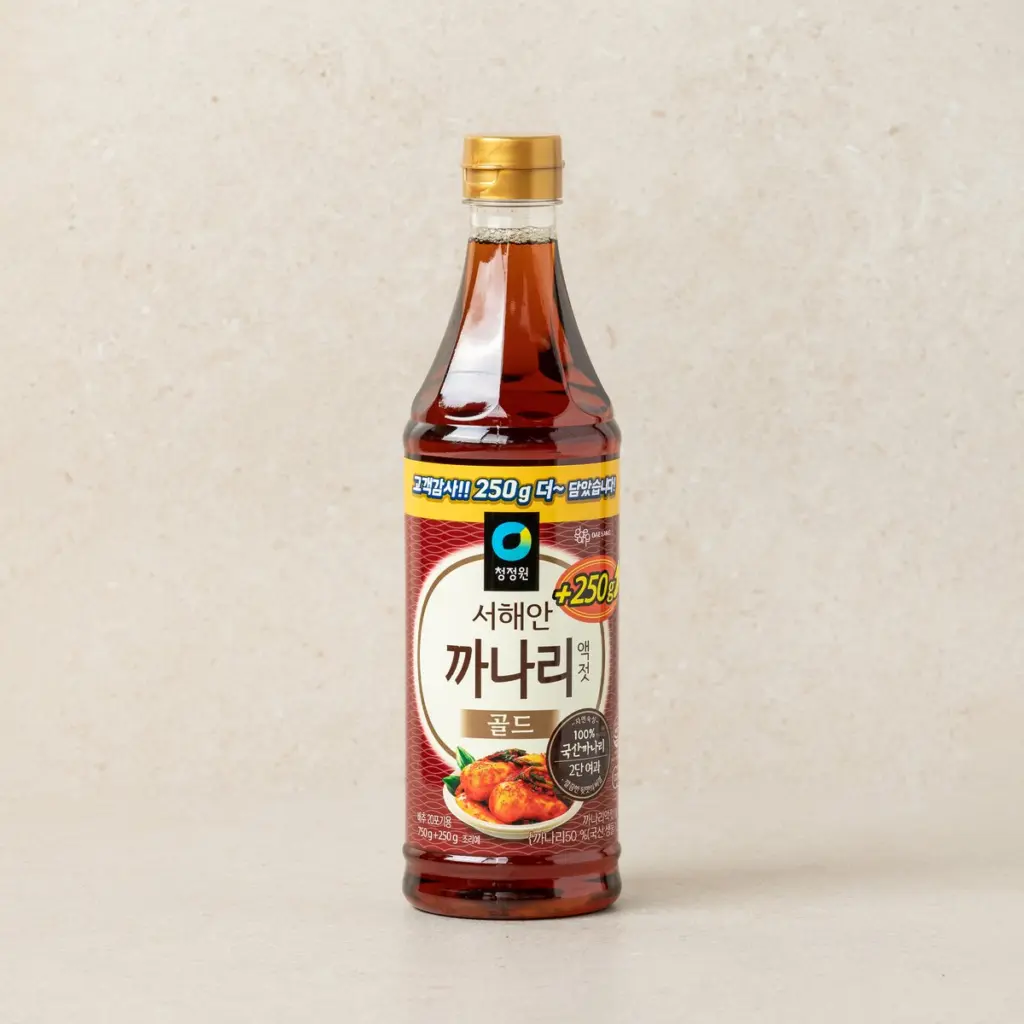
Shop in the US: https://amzn.to/4hhdWB4
Mirin & Matsul 미림, 맛술
Mirin and matsul are both used to remove gamey meat odors and fishy odors from dishes. Both Korean ingredients are made primarily from rice, which gives them a natural sweetness and alcohol content.
Matsul(맛술) has less than 1% alcohol and is made primarily from vinegar, giving it a strong acidic taste with a touch of sweetness. The acidity is effective in removing unwanted smells from meat and fish.
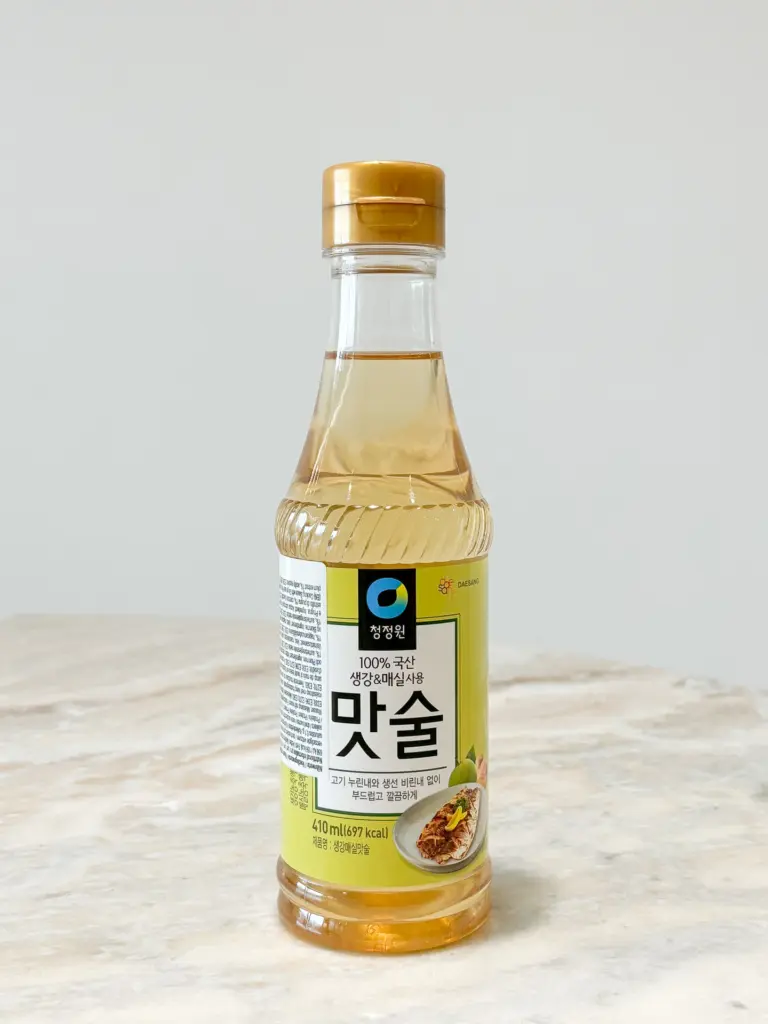
Shop in the US: https://amzn.to/3WDFvwa
Mirin(미림) contains 14% alcohol, which makes it stronger than matsul. It not only helps remove unpleasant odors, but also makes meat more tender. Mirin adds umami and richness to dishes, but because it is quite sweet, you may need to reduce the amount of sugar in the recipe when you use mirin.
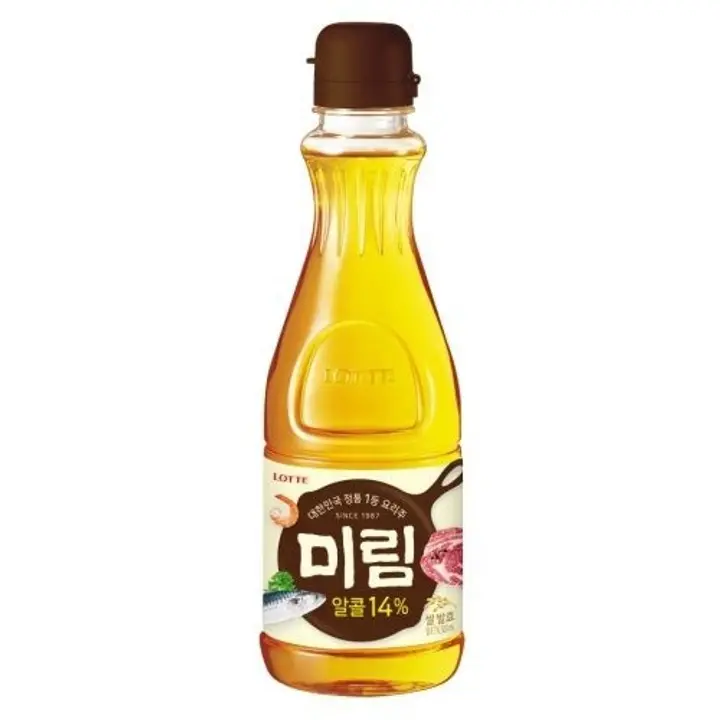
Shop in the US: https://amzn.to/40UJ0RF
Mulyeot (Korean Corn Syrup) 물엿
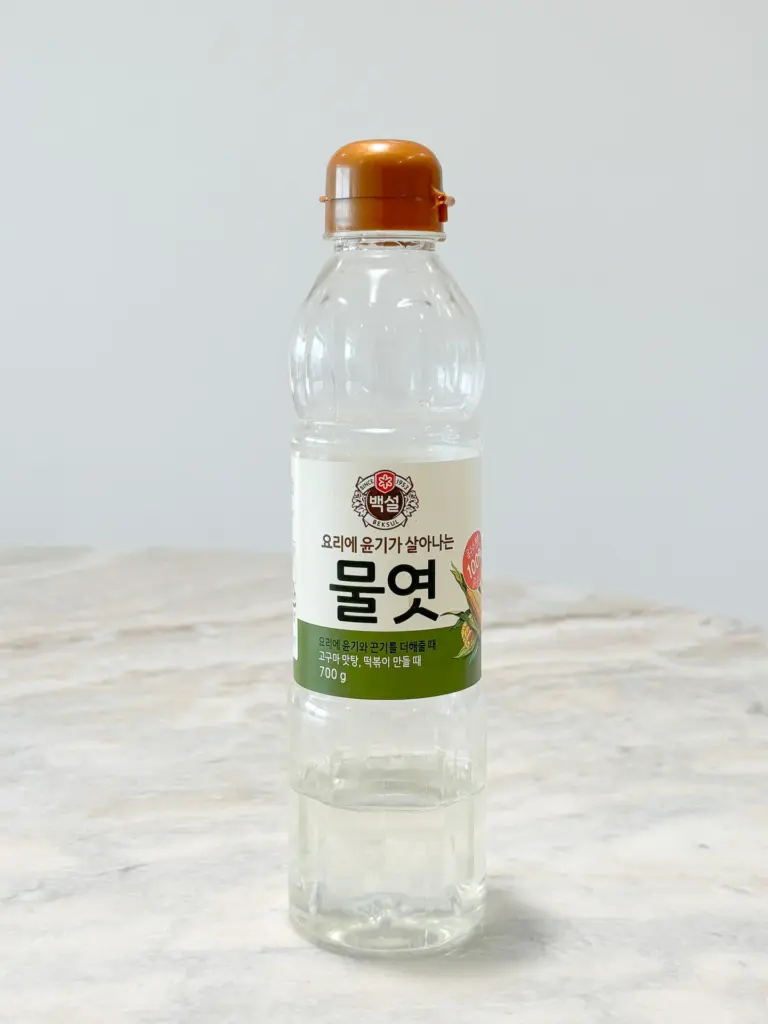
Mulyeot(물엿) is a type of cornstarch syrup. It has a high viscosity and is used in dishes where you want to add sweetness and a glossy finish. Because it is heat resistant, it is ideal for cooking methods such as stir-frying, grilling and braising. When added at the end of cooking, Mulyeot gives a glossy appearance to the dish, making it look more appetizing.
Shop in the US: https://amzn.to/414jWYx
Shop in EU: https://amzn.to/3X3nxnh
Limitless Korean Cuisine
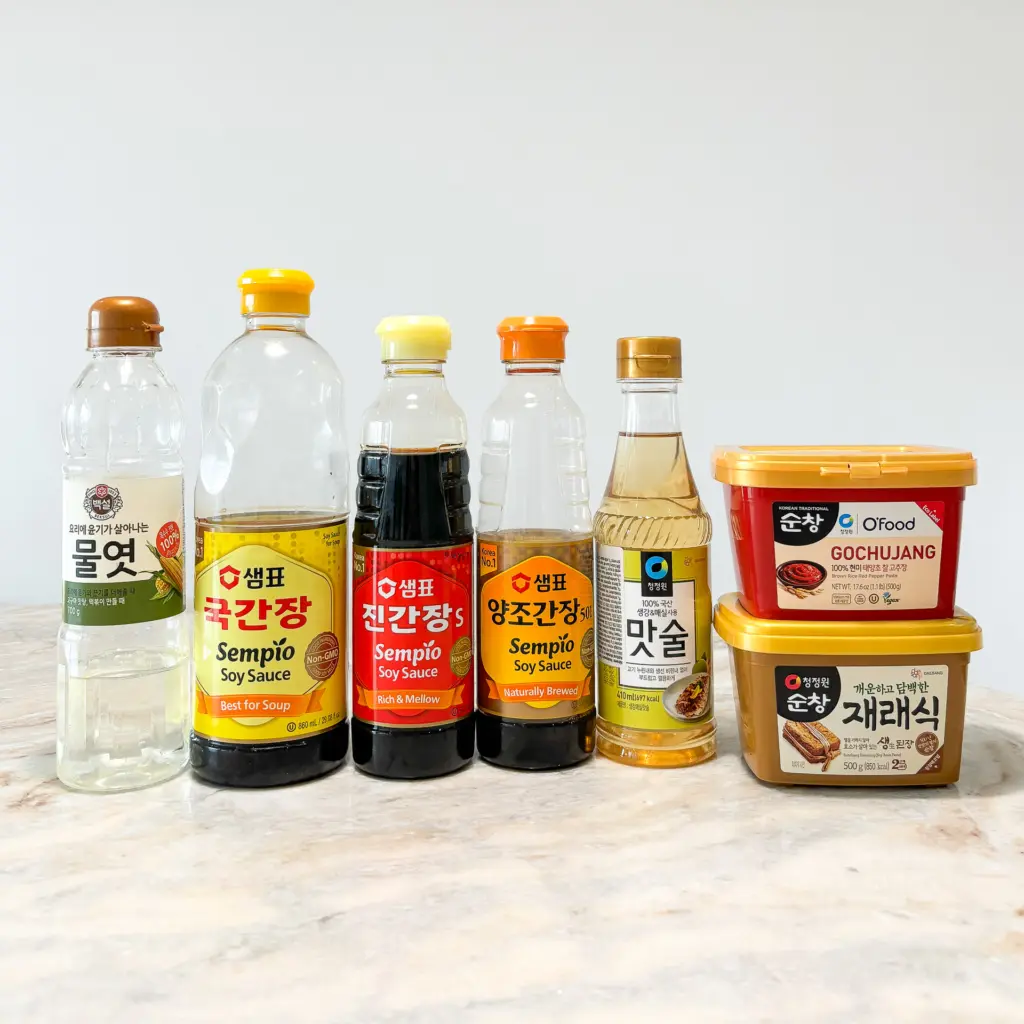
If you have these 10 ingredients, your Korean cuisine will be limitless. With these 10 essential Korean ingredients, you can create even the most complex Korean dishes and make them delicious. I will continue to share more great Korean food information for your delicious Korean meals. Thank you very much!
